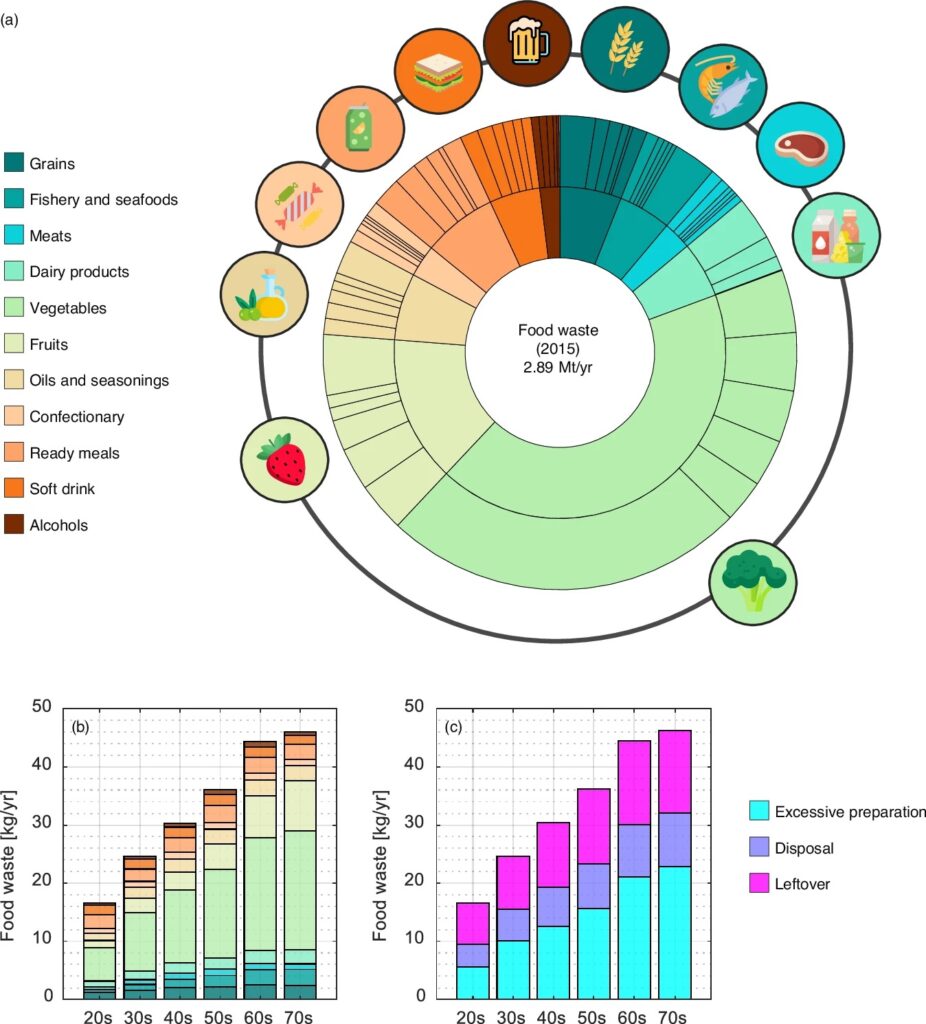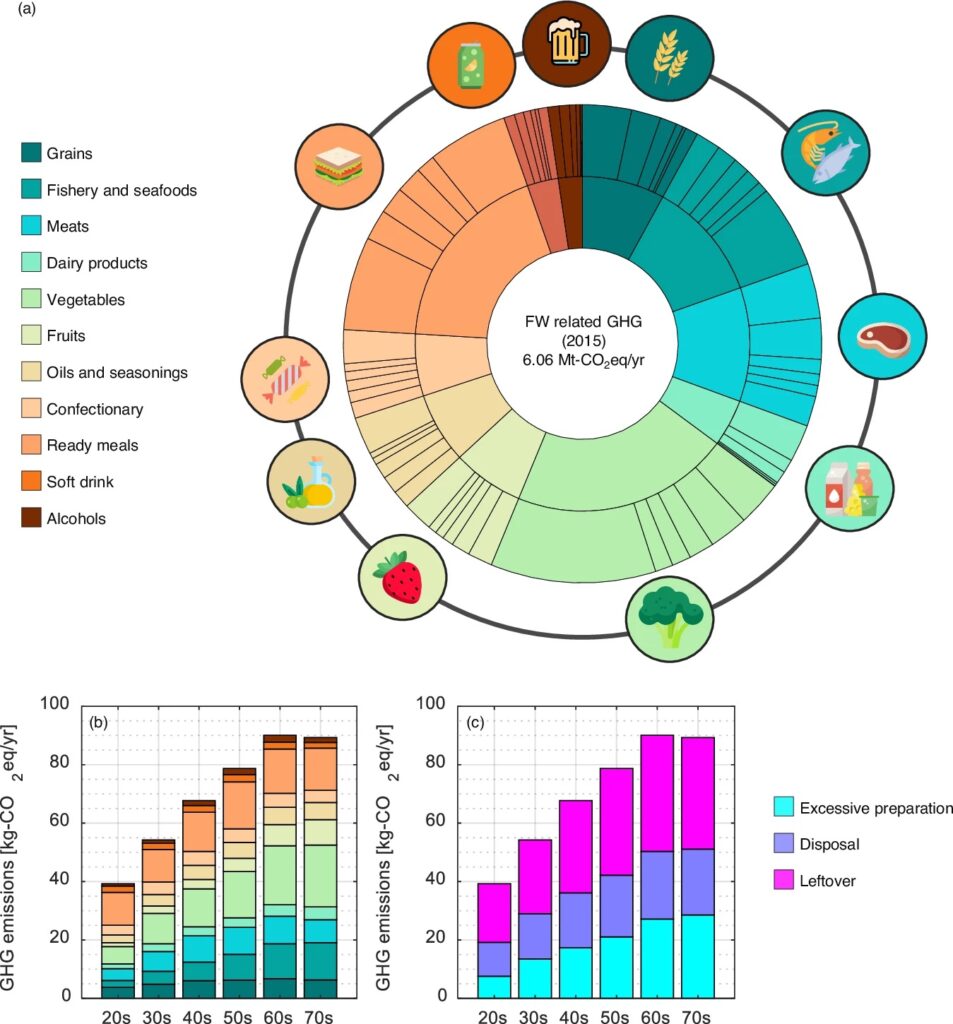In Japan, Older Households Waste Twice As Much Food As Younger Populations
4 Mins Read
A new study in Japan reveals the link between food waste and an ageing population, and how educational initiatives can help buck this trend.
Japan is among the top food waste producers globally, split nearly equally between households and businesses – but who bins this food most differs with age, according to a new study.
A research team led by Ritsumeikan University set out to determine how different foods contribute to overall waste, their associated greenhouse gas emissions, and whether specific populations are more prone to wasting food.
They found that the older the household, the more food ends up being wasted. Nationally, food waste accounts for over six million tonnes of emissions, accounting for almost 20% of household food emissions.
Japan has set targets to reduce food waste by the end of the decade, but the authors say specific measures focused on democratic shifts are crucial for Japan to achieve the Sustainable Development Goals.
Older populations waste food more and generate higher emissions

The research compiled data from existing surveys of food consumption and waste statistics, determining the ratios between the edible and inedible parts of over 2,000 food products, and the physical amount of household food waste for various categories. Combining this information with food-related socioeconomic statistics, they determined how age affects the amount of 200 foods wasted.
They found that, in 2021, households generated 2.47 megatonnes of food waste, much of which was likely still edible. Their analysis revealed a striking difference between younger households and those with an older head, primarily due to the latter’s tendency to purchase more fruits and vegetables, which together comprise 57% of food waste in Japanese homes.
Households in their 70s throw away 46kg of food per capita annually, slightly higher than the 44.5kg wasted by those in their 60s. In stark contrast, households in their 20s or younger waste 16.6kg of food per person per year, less than half of the waste produced by older populations.
The research categorised the reasons behind wasting food as excessive preparation, leftovers, and disposal. The youngest homes are the only ones where leftovers make up more of the waste than excessive food prep (such as too much cutting), with the latter being responsible for 34-50% of waste among households with people aged 30 and above.
In terms of greenhouse gas footprints, households in their 60s are associated with marginally higher food waste emissions than those in their 70s, but both generate around 90kg of CO2e per capita annually. Unlike food waste amounts, leftovers and disposal were bigger contributors than excessive preparation here.
But some products have a much more outsized climate impact. Meat, for example, was responsible for less than 3% of the food wasted, but associated with nearly 10% of the emissions generated.

‘Fit for purpose’ policy instruments key
“An ageing population would be one of the hidden but key factors for consideration when proposing strategies to reduce food waste directly generated by households,” said Yosuke Shigetomi, an associate professor at Ritsumeikan University’s College of Science and Engineering, who led the research.
He added that identifying vegetables and meats as major sources of greenhouse gases also stressed the importance of understanding which food categories contribute most to these issues, which would allow for developing more targeted interventions and policies.
“It will be essential to pay closer attention to the dietary preferences and lifestyles among different generations, particularly under the desire of dietary shifts towards vegetarianism for combating climate change,” he added.
The study emphasised fit-for-purpose policy instruments over a one-size-fits-all approach, particularly for elderly households. “Encouraging them to take a recurrent education programme about household food waste and the related environmental and social issues is important,” it stated.
It also highlighted the need for food producers to develop frozen meal kits for the elderly that can be easily cooked without any excessive preparation, and can be preserved for a long period. As for younger generations, they tend to purchase more confectionery and ready meals, and dine out instead of cooking at home, so a set of dietary and customised policy measurements cognisant of health and food waste is key.
Finally, further awareness campaigns about how to make effective use of foods, particularly fruits and vegetables, including recipes that promote smart use of foods at differing levels of freshness.
In the 2019 Act on Promotion of Food Loss and Waste Reduction, Japan’s government set a target of halving food waste and loss by 2030 (from a 2000 baseline), reaching 4.89 million tonnes. But according to government reports, it actually achieved this reduction in 2022, eight years ahead of schedule.
And last month, the country’s health ministry drafted new guidelines to allow consumers to take home leftovers from restaurants and provide information about proper storage in a bid to further cut its food waste footprint.



